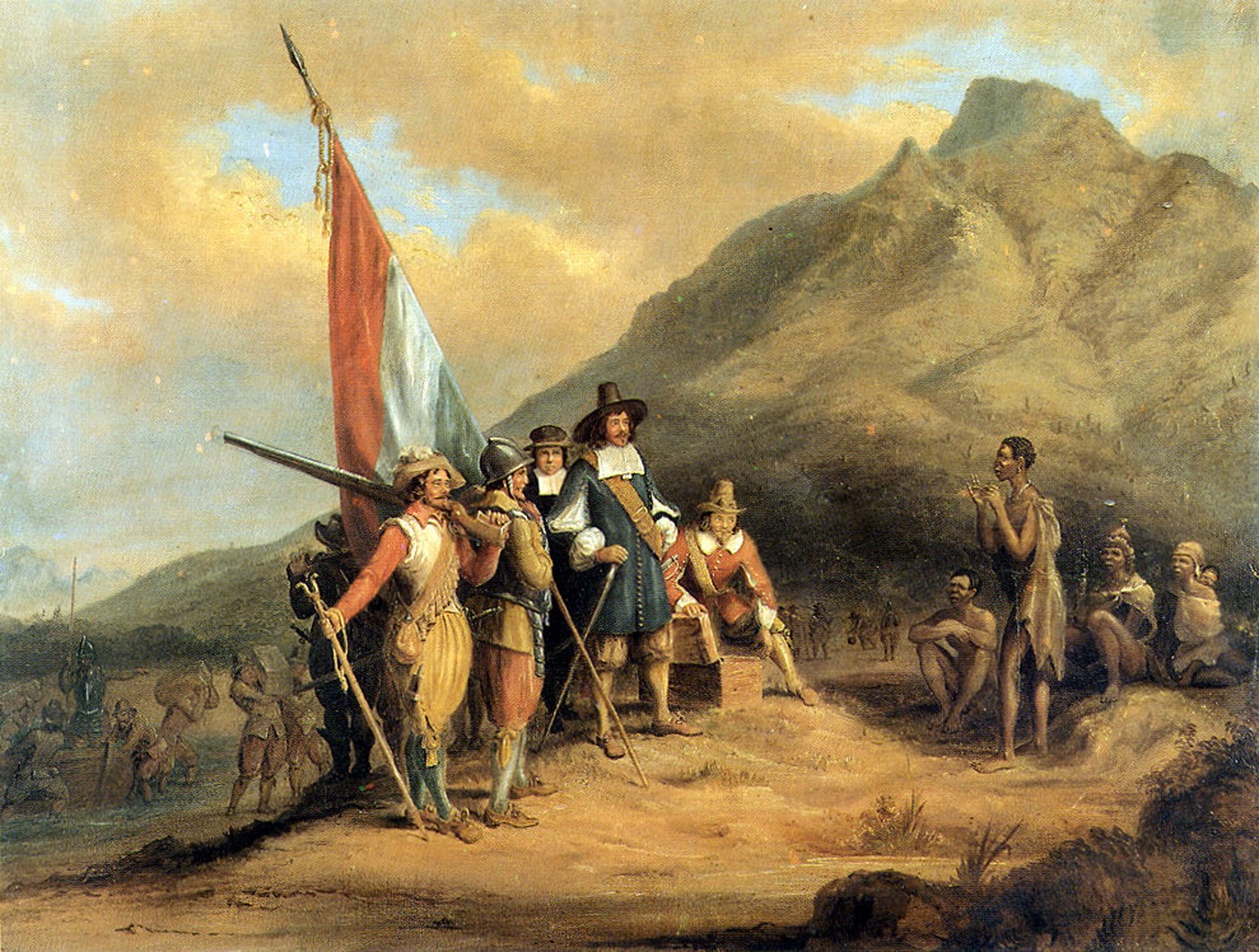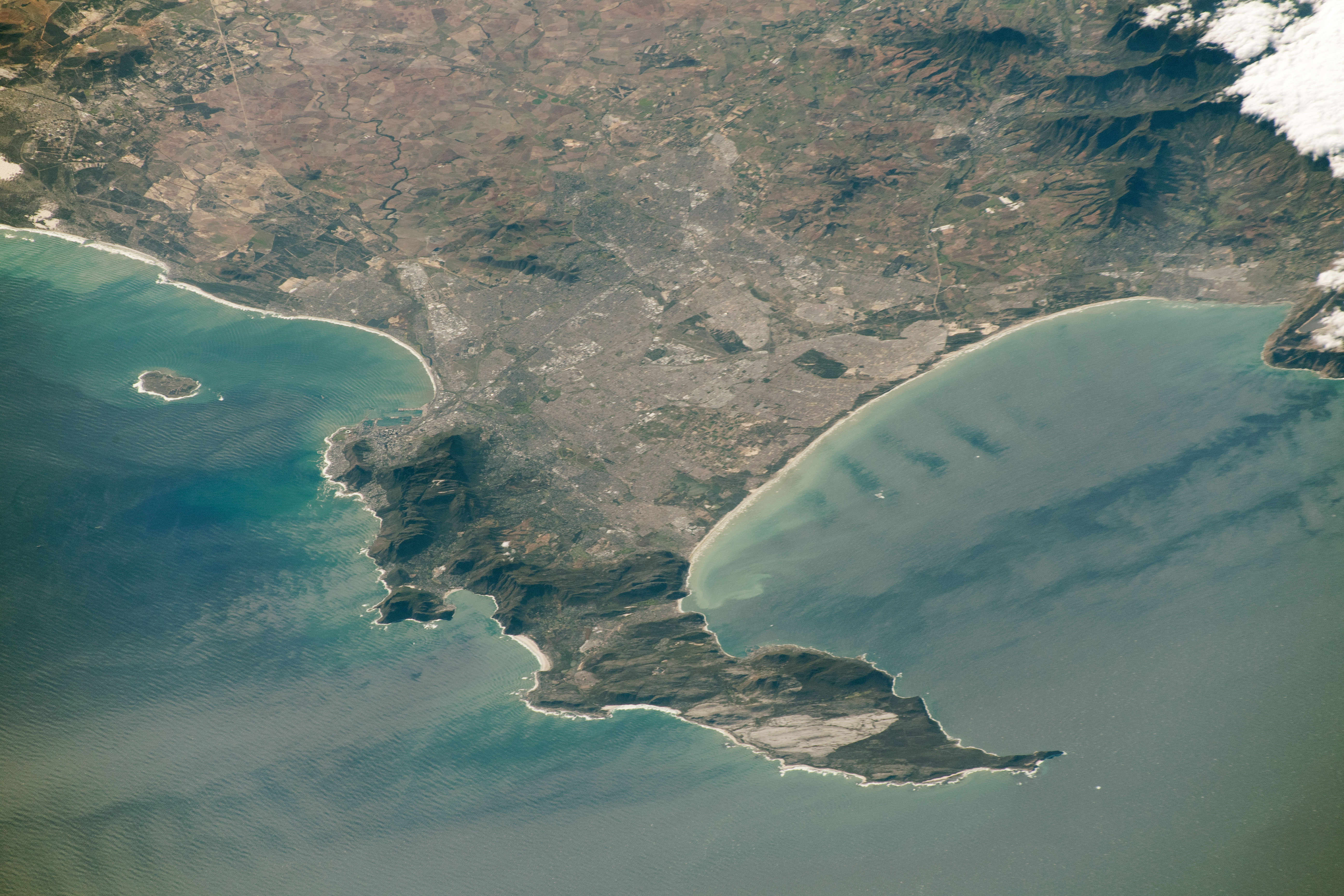|
Coornhoop
Coornhoop (also Koornhoop, Corenhoop, Coorenhoop) is a historic 17th century farmhouse. It is located at 2 Dixton Road in Observatory, Cape Town. Currently, it houses the Centre for Conflict Resolution. History In 1657 and 1658, Jan van Riebeeck gave land to 14 Vryburgers on the western bank of the Liesbeek river to farm with wheat. To protect their harvest from raids by the Khoikhoi, a row of small forts and sheds were built along the river. In the event of an attack, the women and children of the neighbouring allotments were to take shelter in them. In September 1657 the sheds at Coornhoop were completed. After 4 years, the buildings at Coornhoop fell into disuse. A series of owners then subdivided the ground and sometimes consolidated sections, and converted the sheds to residences. It has evolved into one of Cape Peninsula's most beautiful developments. In the 19th and 20th centuries the buildings deteriorated and were demolished. In 1961, the Simon van der Stel Foundation ... [...More Info...] [...Related Items...] OR: [Wikipedia] [Google] [Baidu] |
Observatory, Cape Town
Observatory is a suburb in Cape Town, South Africa, colloquially known as Obs. Bordered by Mowbray to the south and Salt River to the northwest, the area is best known as a student neighbourhood associated with the nearby University of Cape Town and Groote Schuur Hospital. It takes its name from the South African Astronomical Observatory headquarters, built in 1829 by the Royal Observatory. Geography Observatory is situated on the north-facing lower slopes of Devil's Peak. The slope runs into the Liesbeeck River and, as such, much of present-day lower Observatory was a marshy estuary formed by the rivers, where buffalo, hippo, elephant, zebra, jackals, antelope, lions and leopards were once prevalent. The Raapenberg Bird Sanctuary protects of land along the Liesbeek River. History In 1510, the area was the scene of a raid by the Portuguese, led by Francisco de Almeida, on a Goringhaiqua Khoikhoi village, which ultimately led to the death of de Almeida and approximat ... [...More Info...] [...Related Items...] OR: [Wikipedia] [Google] [Baidu] |
Centre For Conflict Resolution
The Centre for Conflict Resolution is a social research institute of the University of Cape Town. It was founded in 1968 by Professor H.W. van der Merwe in Cape Town, South Africa, to conduct academic research on relations between "racial" groups, with the goal of promoting mutual acceptance and co-operation. Initially named the Abe Bailey Institute for Inter-Racial Studies after the original funding organisation, the Abe Bailey Trust, the Institute was renamed the Centre for Intergroup Studies in 1973. During the 1980s this organization was attempting to address conflict resolution resulting from the South African policy of apartheid. Since 1990 the Centre is known as the Centre for Conflict Resolution. The Centre is currently housed in the Coornhoop, a 17th century farmhouse at 2 Dixton Road in Observatory, Cape Town. References External links * Greg Hansen, 2000. Preparing the Table: A Retrospective on the Centre for Intergroup Studies, 1968-1990, Cape Town, South Africa. ... [...More Info...] [...Related Items...] OR: [Wikipedia] [Google] [Baidu] |
9 2 018 0212-001-Dovecots Koornhoop-The Cape-s
9 (nine) is the natural number following and preceding . Evolution of the Arabic digit In the beginning, various Indians wrote a digit 9 similar in shape to the modern closing question mark without the bottom dot. The Kshatrapa, Andhra and Gupta started curving the bottom vertical line coming up with a -look-alike. The Nagari continued the bottom stroke to make a circle and enclose the 3-look-alike, in much the same way that the sign @ encircles a lowercase ''a''. As time went on, the enclosing circle became bigger and its line continued beyond the circle downwards, as the 3-look-alike became smaller. Soon, all that was left of the 3-look-alike was a squiggle. The Arabs simply connected that squiggle to the downward stroke at the middle and subsequent European change was purely cosmetic. While the shape of the glyph for the digit 9 has an ascender in most modern typefaces, in typefaces with text figures the character usually has a descender, as, for example, in . The mod ... [...More Info...] [...Related Items...] OR: [Wikipedia] [Google] [Baidu] |
Jan Van Riebeeck
Johan Anthoniszoon "Jan" van Riebeeck (21 April 1619 – 18 January 1677) was a Dutch navigator and colonial administrator of the Dutch East India Company. Life Early life Jan van Riebeeck was born in Culemborg, as the son of a surgeon. He grew up in Schiedam, where he married 19-year-old Maria de la Queillerie on 28 March 1649. She died in Malacca, now part of Malaysia, on 2 November 1664, at the age of 35. The couple had eight or nine children, most of whom did not survive infancy. Their son Abraham van Riebeeck, born at the Cape, later became Governor-General of the Dutch East Indies. Employment in the VOC Joining the ''Vereenigde Oost-Indische Compagnie'' (VOC) (Dutch East India Company) in 1639, he served in a number of posts, including that of an assistant surgeon in the Batavia in the East Indies. He was head of the VOC trading post in Tonkin, Indochina. After being dismissed from that position in 1645 due to conducting trade for his own personal account ... [...More Info...] [...Related Items...] OR: [Wikipedia] [Google] [Baidu] |
Liesbeek River
The Liesbeek River (also spelt Liesbeeck) is a river in Cape Town in South Africa. It is named after a small river in the Netherlands. The first "free burghers" of the Dutch East India Company were granted land to farm along the river in 1657, shortly after the first Dutch settlers arrived in the Cape. The river was originally called the Amstel or Versse Rivier. It is the first river that Jan van Riebeeck named. The Liesbeek, which is less than long, is situated in the oldest urbanised river valley in South Africa. The headwaters flow from the eastern slopes of Table Mountain above Kirstenbosch Botanical Gardens where the vegetation is largely indigenous. The slopes of Bishopscourt, Cape Town, Bishopscourt have large properties, including Jan van Riebeeck's farm. Water abstraction occurs here, often to water residential gardens, causing the flow to reduce during the summer months. In Newlands, Cape Town, Newlands, there are smaller residential plots. South African Breweries and ... [...More Info...] [...Related Items...] OR: [Wikipedia] [Google] [Baidu] |
Wheat
Wheat is a grass widely cultivated for its seed, a cereal grain that is a worldwide staple food. The many species of wheat together make up the genus ''Triticum'' ; the most widely grown is common wheat (''T. aestivum''). The archaeological record suggests that wheat was first cultivated in the regions of the Fertile Crescent around 9600 BCE. Botanically, the wheat kernel is a type of fruit called a caryopsis. Wheat is grown on more land area than any other food crop (, 2014). World trade in wheat is greater than for all other crops combined. In 2020, world production of wheat was , making it the second most-produced cereal after maize. Since 1960, world production of wheat and other grain crops has tripled and is expected to grow further through the middle of the 21st century. Global demand for wheat is increasing due to the unique viscoelastic and adhesive properties of gluten proteins, which facilitate the production of processed foods, whose consumption is ... [...More Info...] [...Related Items...] OR: [Wikipedia] [Google] [Baidu] |
Khoikhoi
Khoekhoen (singular Khoekhoe) (or Khoikhoi in the former orthography; formerly also '' Hottentots''"Hottentot, n. and adj." ''OED Online'', Oxford University Press, March 2018, www.oed.com/view/Entry/88829. Accessed 13 May 2018. Citing G. S. Nienaber, 'The origin of the name “Hottentot” ', ''African Studies'', 22:2 (1963), 65-90, . See also . ) are the traditionally nomadic pastoralist indigenous population of southwestern Africa. They are often grouped with the hunter-gatherer San (literally "Foragers") peoples. The designation "Khoekhoe" is actually a ''kare'' or praise address, not an ethnic endonym, but it has been used in the literature as an ethnic term for Khoe-speaking peoples of Southern Africa, particularly pastoralist groups, such as the !Ora, !Gona, Nama, Xiri and ǂNūkhoe nations. While the presence of Khoekhoen in Southern Africa predates the Bantu expansion, according to a scientific theory based mainly on linguistic evidence, it is not clear ... [...More Info...] [...Related Items...] OR: [Wikipedia] [Google] [Baidu] |
Cape Peninsula
The Cape Peninsula ( af, Kaapse Skiereiland) is a generally mountainous peninsula that juts out into the Atlantic Ocean at the south-western extremity of the African continent. At the southern end of the peninsula are Cape Point and the Cape of Good Hope. On the northern end is Table Mountain, overlooking Table Bay and the city bowl of Cape Town, South Africa. The peninsula is 52 km long from Mouille point in the north to Cape Point in the south. The Peninsula has been an island on and off for the past 5 million years, as sea levels fell and rose with the ice age and interglacial global warming cycles of, particularly, the Pleistocene. The last time that the Peninsula was an island was about 1.5 million years ago. Soon afterwards it was joined to the mainland by the emergence from the sea of the sandy area now known as the Cape Flats. The towns and villages of the Cape Peninsula and Cape Flats, and the undeveloped land of the rest of the peninsula now form part ... [...More Info...] [...Related Items...] OR: [Wikipedia] [Google] [Baidu] |
Simon Van Der Stel
Simon van der Stel (14 October 1639 – 24 June 1712) was the last commander and first Governor of the Dutch Cape Colony, the settlement at the Cape of Good Hope. Background Simon was the son of Adriaan van der Steland Maria Lievens, an official of the Dutch East India Company (VOC). Adriaan was appointed the first Dutch governor of Mauritius in 1639. Simon was born at sea while his father was en route to Mauritius to take up his new posting. Adriaan had a long tenure in Mauritius, and Simon spent seven years there. His mother was Maria Lievens, daughter of a freed Indian slave woman known as Monica of the Coast of Goa, or Monica da Costa. Adriaan's governorship ended after five years, and after a few more years, Adriaan left Mauritius for Dutch Ceylon. Adriaan was murdered in Ceylon and Maria also died. Simon went on to Batavia, capital of the Dutch East Indies, where he remained until he was 20 years old. Career He then went to the United Provinces, where ... [...More Info...] [...Related Items...] OR: [Wikipedia] [Google] [Baidu] |
William Fehr
William Fehr (17 April 1892 – 2 April 1968) was a South African businessman and art collector noted for his acquisition of famous artworks, known as The William Fehr Collection, now on display in the Castle of Good Hope in Cape Town. The collection was made publicly available for the first time in 1952 when Fehr and other collectors were invited to display historic pieces at the castle. A decade later the collection was purchased by the state and is now owned by The Department of Arts and Culture of South Africa. Early childhood William Fehr was born in a remote colonial outpost called Burgersdorp, a small town that linked the Cape Colony in the eastern frontier to the south of the Free State via a newly built railway. Fehr attended an Academy school in the little town. In 1901 his father Carl Fehr, who was a successful businessman in the town, moved his family back to his hometown of Wiesbaden in Germany as a result of his poor health and the looming threat of the Anglo- ... [...More Info...] [...Related Items...] OR: [Wikipedia] [Google] [Baidu] |
Standard Encyclopaedia Of Southern Africa
The ''Standard Encyclopædia of Southern Africa'' (''SESA'') is a 12-volume encyclopaedia that is principally about the Republic of South Africa and nearby countries. About 1400 people contributed to the encyclopaedia. The first two volumes were published in August 1970; the 12th and final volume was published in September 1976. Scope Originally, ''SESA'' was to be written in Afrikaans, to focus entirely on South Africa, and to be published in six volumes. However, not only did this significantly limit the target market, many of the encyclopaedia's writers submitted their copy in English. The publishers decided to prioritise an English-language edition, and to expand the scope of the encyclopaedia to encompass all of the African countries in the Southern Hemisphere. (Eventually, the Afrikaans edition was abandoned.) Although South Africa remains the central focus, the scope of the encyclopaedia extends through the Southern African countries of Angola, Botswana, Eswatini, L ... [...More Info...] [...Related Items...] OR: [Wikipedia] [Google] [Baidu] |






